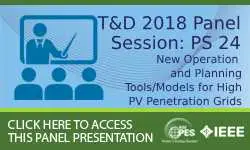-
Members: FreePES
IEEE Members: $45.00
Non-members: $70.00Pages/Slides: 60
1. INTRODUCTION
Fixed Inductors are often used in shunt capacitor installations in series with each phase of a capacitor bank. The inductors primary purpose is to limit transient currents during switching (inrush) or close in faults (outrush). In wye connected banks inductors have been placed between the bus and the capacitor switching device, between the capacitor switching device and the capacitor, or between the neutral end of each phase of the capacitor and the neutral point as shown in Figure 1.
Since the primary purpose of these fixed inductors is to limit transient currents associated with the capacitor bank, we name them: "Transient Limiting Inductors" (TLIs). These are fixed series inductors, not to be confused with "pre-insertion inductors" supplied with some capacitor switching devices, which are only temporarily in the circuit during a closing operation.
In the past 10 - 15 years capacitor bank faults have arisen where the capacitor was shorted out and the fault impedance was the TLI in series with the system back-up impedance. This situation gives rise to a Transient Recovery voltage (TRV) that is unmanageable by many circuit breakers, resulting in the circuit breaker failing to interrupt. Some kind of TRV mitigation is required to prevent this.


